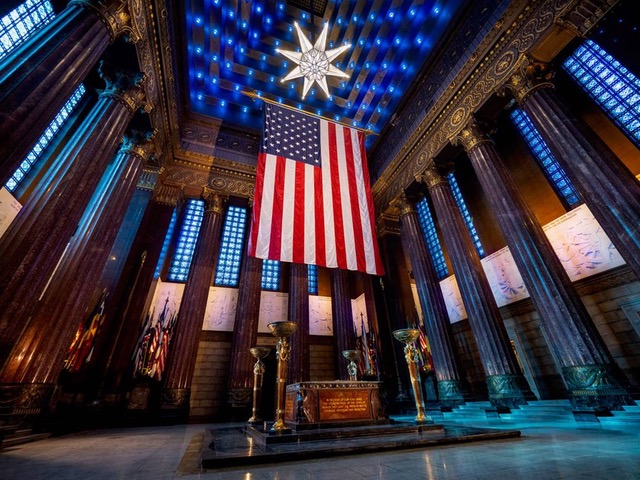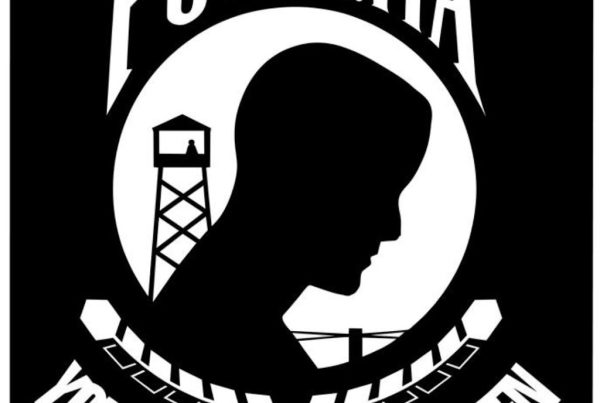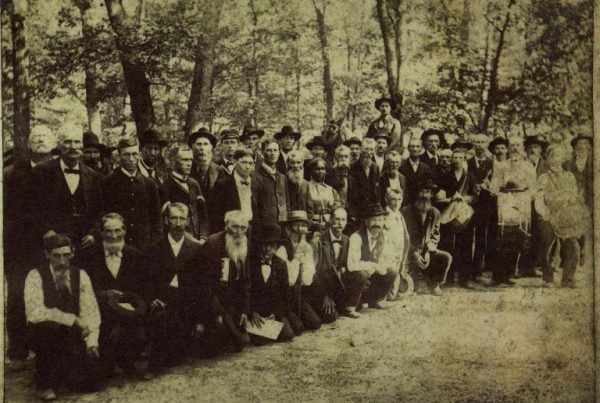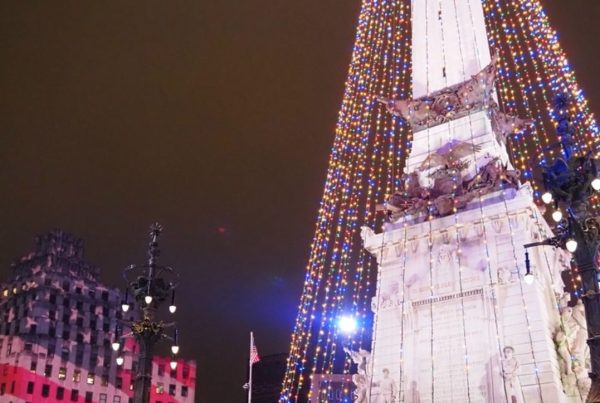Often considered one of Indiana’s best kept secrets, the Indiana War Memorial is a well-recognized symbol of downtown Indianapolis. It holds an array of historical artifacts and quite a few surprises.
The cornerstone of the Memorial was laid on July 4, 1927 after World War I to attract the newly formed American Legion National Headquarters to Indianapolis. Today, the Memorial offers a glimpse of the history of Indiana veterans from all conflicts in its Museum and the glamor of post war architecture as presented in Pershing Auditorium. Visitors often miss the narrow steps climbing up into the mausoleum shaped room at the top of the Memorial, which will take your breath away. The Shrine Room brings an emotional feeling, one of significant ‘awe’ and patriotism—even before you understand the symbolism of every detail in this space that was created to commemorate the “war to end all wars”.
Dedicated on Armistice Day, November 11, 1933, the original intent of the Shrine Room was to inspire and promote citizenship amongst all who visit, an intent that is still successful to this day. The room is filled with so many meaningful details, it is difficult to decide where to focus first—and that’s after you catch your breath and get comfortable in the overwhelming silence of the space. Each architectural detail in the room holds a symbolic significance to America, and the blood that was shed for the country. Throughout the room visitors see the colors of red, white, and blue in many locations.
In the middle of the room, sits the Altar of Consecration — a giant marble altar flanked by torches on each side, portraying similarities to the altars of ancient temples. Suspended far overhead, from the middle of the ceiling hangs a beautiful Swedish crystal chandelier known as the Star of Destiny. The Star of Destiny was a symbol of hope within the United States following World War I in the 1920s and 1930s. Far overhead, the Star of Destiny is surrounded by a significant number of small lights that twinkle like stars in a clear night’s sky in a space of blue. On a sunny day, the room is illuminated with beautiful light reflected through large stained-glass windows on all four walls. The blue represents the freedom we have as Americans and the freedom that has been defended in the past and present.
Suspended below the Star of Destiny and above the Altar of Consecration hangs a Garrison flag. Once your eyes adjust to the light in the Shrine Room, viewers will recognize the room is flanked by sixteen soaring 40-foot columns made of American marble from Vermont. The red color of the marble was selected to represent the blood shed during World War I, in addition, the columns were placed close together to create a sense of the defending of the nation.

The symbolism of this room not only honors the sacrifice and loss of the United States, but also acknowledges and honors the Allied powers America fought beside. Beyond the large red columns – at eye level – there are a series of small lit alcoves, containing the framed portraits of World War I Allied Generals and Field Marshals. In each corner of the room proudly displays the many flags of the Allied countries who supplied service members and were victorious together.
Each of the four walls of the Shrine Room present a white frieze, sculpted by Mr. Frank Jirouch, depicting the story of World War I. The North frieze depicts the United States joining the Allied powers in the war. The East and West walls portray the struggle of war by showing the equipment and soldiers used to produce every battle. Finally, the South frieze celebrates victory and the goddess of Peace, portraying a peaceful future and all mankind living under peaceful conditions. The entire frieze is illuminated in white light, representing purity.
The Shrine Room is an emotional experience that brings a sense of patriotism and awe to all those who visit and is the reason the building was built. It truly is Indiana’s Best Kept Secret and a powerful and meaningful space every American deserves the opportunity to experience—especially when you consider all that has happened in the world since the room was constructed to commemorate “The War to End All Wars.”
The Indiana War Memorial, including the Shrine Room, is open to visitors from Wednesday through Sunday from 9 to 5. Admission is free. We guarantee you will not be disappointed.




